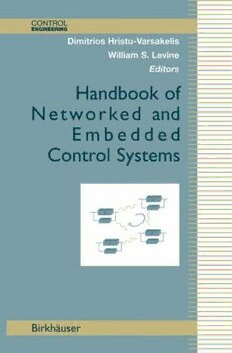
Handbook of Networked and Embedded Control Systems PDF
805 Pages·2005·5.548 MB·English
Most books are stored in the elastic cloud where traffic is expensive. For this reason, we have a limit on daily download.
Preview Handbook of Networked and Embedded Control Systems
Description:
The vast majority of control systems built today are embedded; that is, they rely on built-in, special-purpose digital computers to close their feedback loops. Embedded systems are common in aircraft, factories, chemical processing plants, and even in cars—a single high-end automobile may contain over eighty different computers. In such settings, controllers often use shared networks to communicate with each other and with large numbers of sensors and actuators scattered throughout the system. The design of embedded controllers and of the intricate, automated communication networks that support them raises many new questions—practical, as well as theoretical—about network protocols, compatibility of operating systems, and ways to maximize the effectiveness of the embedded hardware. The Handbook of Networked and Embedded Control Systems, the first of its kind, provides engineers, computer scientists, mathematicians, and students a broad, comprehensive source of information and technology to address many questions and aspects of embedded and networked control. A carefully organized collection of important results, tools, software, and technology, this work unifies into a single reference many scattered articles, websites, and specification sheets—information that might otherwise be difficult to find. Key topics and features include: * Self-contained, sharply-focused articles; readers have easy access to specific answers to questions without having to read hundreds of pages * Clear structure and presentation of concepts in intuitive order * Separation of material into six main sections—Fundamentals, Hardware, Software, Theory, Networking, and Applications * Case studies, experiments, and examples that provide a multifaceted view of the subject, encompassing computation and communication considerations * Information about commercially available tools and hardware * Comprehensive bibliographies and index This is an indispensable text for anyone interested in knowing more about embedded and networked control systems. Researchers will appreciate the handbook’s up-to-date results in the theory of embedded control; developers and users will value its information on special-purpose computer hardware and operating systems modifications that support real-time control; students will find the systematic organization and wide coverage useful for learning and reference.
See more
The list of books you might like
Most books are stored in the elastic cloud where traffic is expensive. For this reason, we have a limit on daily download.
